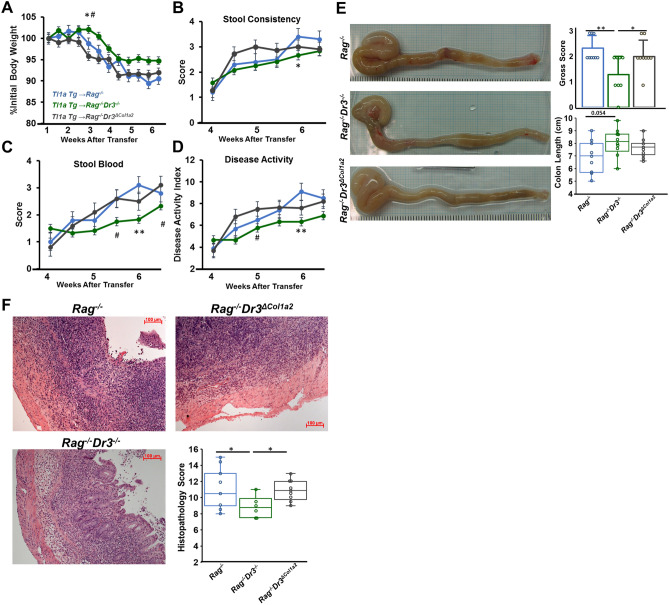Figure 1.
Fibroblast-selective DR3 deficiency results in severe disease activity: (A–D) Percent body weight loss, stool consistency, stool blood, and composite disease activity index are shown for the adoptive transfer model of colitis, at indicated time points for transfers of naïve Tl1a-Tg T cells into Rag−/−, Rag−/−Dr3−/−, or Rag−/−Dr3∆Col1a2 mice. Data are represented as means ± SEM; * indicates p < 0.05, **p < 0.01 Rag−/−Dr3−/−vs Rag−/−; # indicates p < 0.05 Rag−/− Dr3−/− vs Rag−/−Dr3∆Col1a2; n = 9–10 mice per group. (E–F) Representative gross colonic specimens, quantitated macroscopic pathology scores, and colon lengths; representative H&E cecal sections and quantitated histopathological scores are shown; * indicates p < 0.05, **p < 0.01. Pooled data of 3 independent experiments are represented.

